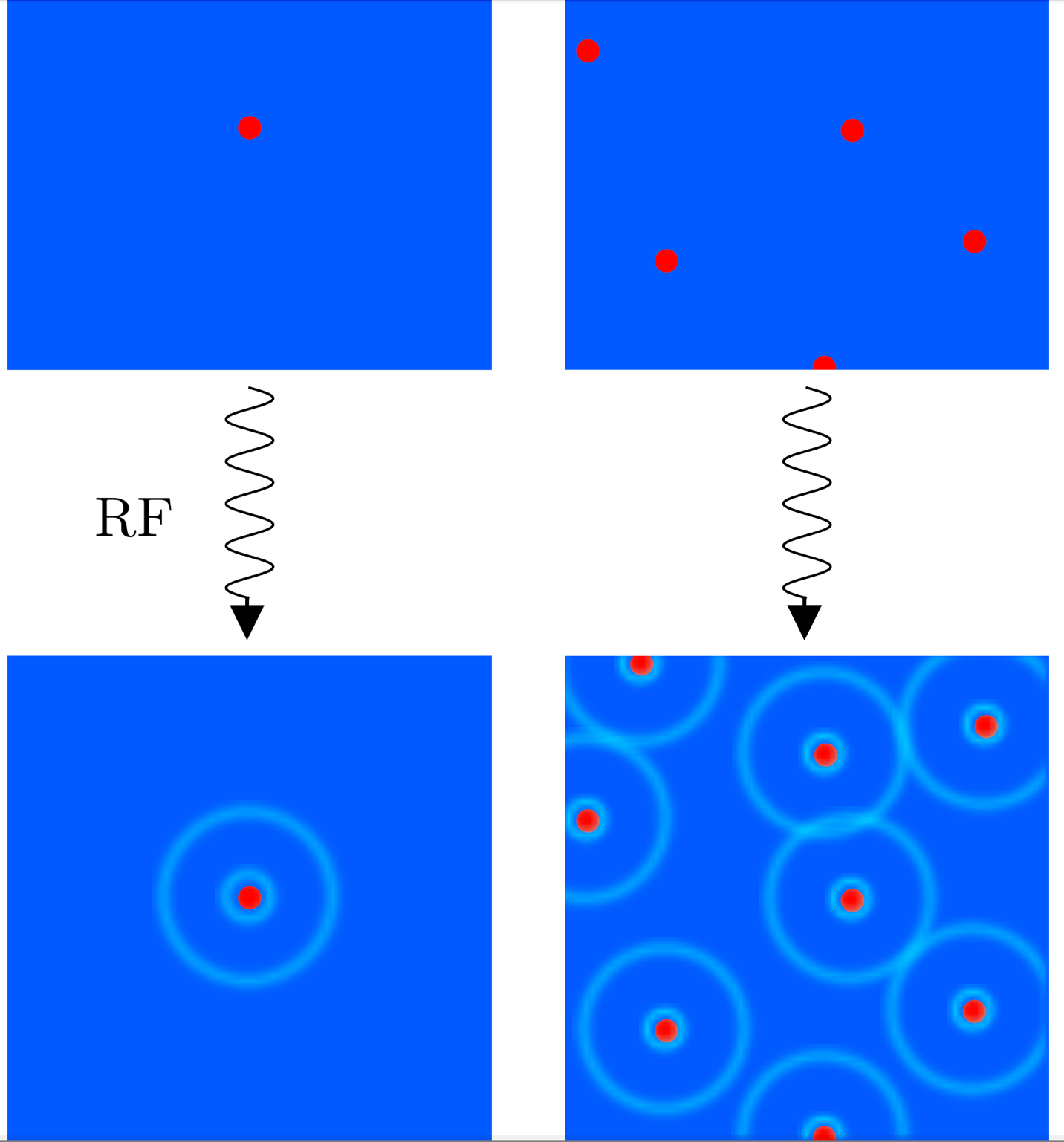Stability and breakdown of Fermi polarons in a strongly interacting Fermi-Bose mixture
In a recent collaboration between Georg M. Bruun and the group of Rudi Grimm (Innsbruck), the effective interaction between Fermi polarons was explored.

For large impurity concentration, the Fermi polaron was observed to disappear and a Bose polaron emerged instead.
The experimental system consisted of bosonic K impurity atoms interacting with a surrounding Fermi gas of Li atoms forming a so-called Fermi polaron. The bosonic nature of the impurities made it possible to realise large concentrations of polarons. Using radio-frequency spectroscopy and an interatomic Feshbach resonance, the energy of the Fermi polaron was measured as a function of interaction strength and impurity concentration.
The experimental results were shown to agree well with theoretical predictions for Fermi polarons and the effective interaction between them. For large impurity concentration, they condensed to form a Bose-Einstein Condensate and the Fermi polaron picture was observed to break down. Instead, the experimental results were consistent with the formation of a Bose polaron, where the Li atoms now played the role of impurities and the K atoms formed the environment.
Read the full article here: https://journals.aps.org/pra/abstract/10.1103/PhysRevA.103.053314
